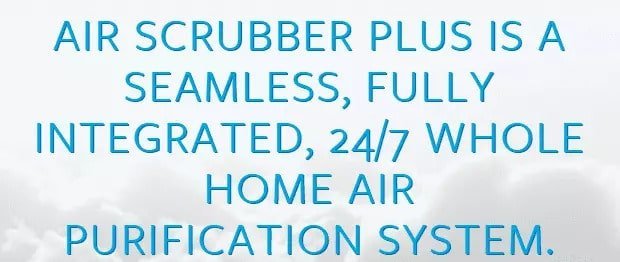8 Ways to Prepare Your HVAC System for Texas Winter
Although Texas is in the southern United States, it is still subject to harsh winter weather, with sub-freezing temperatures, high winds, and a steady amount of accumulation. For this reason, it is important to protect your family by making sure your heating system is at peak performance. Scheduling professional HVAC maintenance ensures you have a heating system you can rely on. Winterizing your HVAC system includes checking the furnace, thermostat, air ducts, electrical wiring, draining pans, and air conditioner. Below is a quick HVAC winterization guide to get you started. If you have any further questions or need to schedule an HVAC inspection before winter, feel free to contact Strittmatter Plumbing, Heating, and AC.
Hvac Winterization Tips
Now that you understand what you protect your HVAC system against, let’s look at some HVAC winterization tips outside and inside your home.
1. Schedule Professional Furnace Maintenance
The first step in winterizing your HVAC system is to schedule professional furnace maintenance. A certified HVAC technician can comprehensively assess your furnace to identify any potential issues and fix them before they become expensive problems. Maintenance is the best way to ensure your furnace works reliably and efficiently during winter.
2. Insulate AC Lines
Insulating your AC lines is a simple DIY job to protect your air conditioner during the winter. Remove the current insulation if it is outdated or worn. Afterward, clean the lines and apply new insulation. Wrap the foam around the pipe. Secure it with tape if necessary. Make sure the insulation covers the entire line and protects it from moisture.
3. Cover the Air Conditioner During Fall, Not Winter
One of the most common mistakes homeowners make is covering the air conditioner during winter. However, air conditioners are built to withstand winter elements. Covering your air conditioner reduces airflow and causes moisture buildup. Mold and rust occur as a result. The best time to cover the AC is during the fall to prevent leaves and debris from getting into the unit. Remove the cover during winter.
4. However, You Can Build a Ventilated AC Shelter
If you insist on protecting your outside air conditioner from ice and snow, build or purchase an AC shelter. The shelter should protect the AC without directly covering it or touching it. Make sure the shelter has openings for proper ventilation. The walls and top should be at least three to five inches from the AC unit. Remove the shelter in the spring.
5. Clean the Air Conditioner
Speaking of proper ventilation: If your air conditioner is surrounded by bushes, trees, and tall grass, it may be covered in debris. You want as much outside cold air blowing through the unit as possible to keep it dry. Take some time to clean around the AC unit, removing debris and anything that blocks the vents. Use an appropriate gentle household cleaner to scrub around the outside, removing dirt and stains.
6. Test Your Thermostat
Testing a thermostat is a simple procedure. You are evaluating two things. First, you are checking to see if the thermostat triggers the furnace. Turn the thermostat and listen to the furnace. It should turn on within five minutes of you turning on the thermostat. Second, you are checking to see if the furnace reaches the desired temperature before shutting off. If you have any problems, contact an HVAC company in Texas.
7. Change Your Filter
Ideally, you want to change your filter every three months or before each season. Changing your filter allows warm air to circulate through the house easier, which promotes a more efficient furnace performance. A new filter also assists in cleaning the air that circulates through the house, which could reduce health problems and allergies during the winter.
8. Replace Your Furnace Before Winter
There is never a bad time to replace a furnace. However, if you are thinking about scheduling a furnace replacement, it is always better to do it before it gets cold outside. Doing so prepares you for the rough winter ahead instead of dealing with an emergency replacement when there’s a foot of snow outside in sub-freezing temperatures.
Schedule a Furnace Inspection From Strittmatter
Keep your family safe and warm this winter. Winterize your heating system by scheduling your home’s furnace inspection and maintenance. Strittmatter Plumbing, Heating, and AC can help you with our pre-winter furnace checklist. Contact us today for an in-home assessment.
What Is Winterization?
Winterization prepares your heating system for the Texas winter by inspecting and fixing issues that could arise throughout the season. When winterizing your HVAC system, you need to protect it from low temperatures, snow and ice, and high winds.
1. Snow and Ice
If you are a homeowner, you’ve probably seen firsthand what snow and ice can do to a roof, treeline, or power line. The same is true for any outside HVAC component. Both snow and ice can damage a component by its weight or temperature. Ice can often cause pipes and connections to freeze and crack.
2. Low Temperatures
Low temperatures are not a threat to your furnace or heat pump. Your furnace is inside, and your heat pump is deep in the ground. However, when combined with high winds and moisture, sub-zero temperatures can damage your air conditioner and related parts.
3. High Winds
High winds typically occur during the fall or early spring when the temperature rises or falls by several degrees. Some of the results of high winds are snow banks, ice storms, and tornadoes. You need to protect your outdoor HVAC equipment from these harsh conditions.





